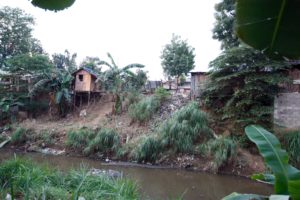Clean-up of Bulacao river set on Feb. 22

The CCENRO will be conducting a dialogue among households, and owners of establishments located near the Bulacao River this February 20. | CDN file photo
Cebu City, Philippines – The down stream of the Bulacao River, one of the “dead” rivers identified by state environmental officers, will undergo a clean-up and will then be placed under monitoring.
Ma. Nida Cabrera, chief of Cebu City Environment and Natural Resources Office (CCENRO), said they scheduled the clean-up of the Bulacao River on February 22.
Read: EMB-7: Two Cebu City rivers considered as ‘dead’
Cabrera told Cebu Daily News Digital in a text message that personnel from the Provincial Environment and Natural Resources Office (PENRO) in Argao town will be assisting them in the clean-up of the river, covering the areas from Barangay Bulacao to Barangay Inayawan, where the river discharges to the sea. The distance covered is estimated to be four kilometers
Cabrera said both CCENRO and PENRO – Argao will still be profiling the river. Data gathered will be used to determine what rehabilitation measures will be needed to help revive the river.
“We will be documenting Bulacao River’s length and width, and we will be capturing aerial shots for profiling and monitoring purposes,” said Cabrera.
Dialogue
Cabrera, meanwhile, said they will be conducting a dialogue among households, and owners of establishments located near the Bulacao River this February 20.
“One of the purpose of the dialogue is to explain to them how polluted Bulacao River has become,” added Cabrera.
On Tuesday, CCENRO met with officers from the Department of Environment and Natural Resources in Central Visayas (DENR -7) to discuss rehabilitation plans for two of the city’s major river systems after they were considered dead by the Environmental Management Bureau (EMB).
The other river system considered dead by the EMB was the downstream of Lahug River, which covers Barangays Tejero, T. Padilla, and Tinago. /bjo
Disclaimer: The comments uploaded on this site do not necessarily represent or reflect the views of management and owner of Cebudailynews. We reserve the right to exclude comments that we deem to be inconsistent with our editorial standards.
